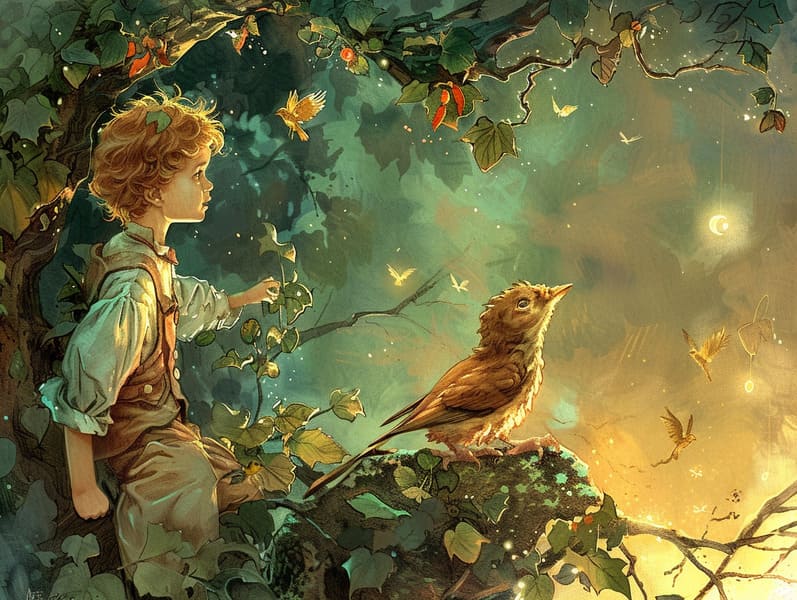The Story Behind Best Fairy Tales with the Timeless Spell.
The Story Behind Best Fairy Tales with the Timeless Spell.
Blog Article

Fairy tales for kids have old origins. These tales have been narrated from one generation to the next long before they were ever recorded. They arose from a variety of societies, including American traditions. They were initially narrated among grown-ups, often carrying themes and messages pertaining to the societal norms and beliefs of the time.
The famous Grimm duo, the two Grimm brothers, were among the first to collect many of these beloved narratives. Their published works, "Grimm's Children's Stories," included tales like "Cinderella," "Little Brother and Little Sister," and "Little Snow White," which have since become cornerstones in the world of timeless fairy tales. Similarly, Hans Andersen's charming tales, such as "The Mermaid," and "The Little Duckling," have captured hearts worldwide, guaranteeing their place in the pantheon of iconic fairy tales.
Despite their ancient origins, classic fairy tales remain as applicable as ever, especially as nighttime stories for kids. These charming stories are now available in different formats, including vibrantly illustrated books, captivating animations, and free fairy tales online.
Their ongoing significance can be credited to several magical reasons:
Moral Lessons: Ancient fairy tales often share important moral lessons. Tales like "The Wolf and the Liar" teach the value of being truthful, while "The Story of the Tortoise and the Hare" exemplify the values of steadfastness and unassuming nature. These stories offer young readers clear distinctions between virtue and vice, shaping their moral compass in a mild yet meaningful way.
Empathy and Understanding: Fairy tales frequently feature beings facing obstacles and hardships, encouraging kids to resonate with their struggles and back their triumphs. For instance, "Beauty and Her Beast" illustrates the importance of valuing inner qualities to see the inner spirit of a individual, promoting compassion and knowledge.
Cultural Perception: Many fairy tales are imbued with the cultural contexts from which they developed. Immersing in these stories can provide enlightening views into different traditions, advancing a sense of cultural appreciation and acknowledgment.
Fantasy and Imagination: The imaginative elements in old fairy tales—fairy godmothers—foster children’s creative minds. These tales guide readers to magical realms, promoting fantasy ideas and a sense of magic that continues a lifetime.
Timeless fairy tales are not only spellbinding but also informative. They function as magical tools in enhancing various cognitive and affective skills in young readers. When ancient fairy tales are recited, they improve communication skills by offering new language items and complex sentence structures. This practice also nurtures hearing abilities and focus, as children listen intently, keen to see what happens next.
Furthermore, debating the themes and characters of old fairy tales can develop evaluative skills and evaluative skills. Children learn to discover patterns, forecast, and understand cause and effect. These debates also ease young ones convey their thoughts and feelings, boosting their emotional intelligence.
In today’s electronic age, the existence of internet fairy tales has made these tales more within reach than ever. Online platforms and software make available comprehensive collections of traditional fairy tales that can be browsed or listened on anytime, anywhere. Fairy tales read out loud are particularly favored, making available an captivating way for young ones to be a part of these entrancing tales. Narrated books and read-out-loud videos carry characters and settings to life, often augmented by whimsical audio effects and harmonies that heighten the narrative adventure.
The timeless charm of timeless fairy tales lies in their ability to alter to present days while continuing with their core messages. Contemporary retellings of these narratives often present more multicultural protagonists and modern settings, making them familiar to today’s audience. However, the central morals of valour, generosity, and lawfulness remain unchanged, continuing to affect audiences of all ages.
Classic fairy tales also offer a sense of protection and knowability. They showcase a structured narrative with a apparent beginning, middle, and end, often wrapping up with the conclusion of conflicts and the triumph of good over evil. This regularity can be placating for the young, making known a sense of reliability in an dynamic world.
Ancient fairy tales continue to spellbind and instruct new generations, maintaining their appeal and significance in modern society. As children's bedtime stories, they put forth a perfect blend of charm and understanding, facilitating moral values, empathy, and creativity. The proliferation of online storybooks and the favor of fairy tales read aloud secure that these traditional narratives remain accessible to new generations.
By retaining and distributing these tales, we continue to honor the rich tapestry of fantasy and cultural heritage. Whether you are reading a colorful picture book, perusing a online library, or listening through an audio story, the wonder of timeless fairy tales is always within reach. These stories point out of the unchanging nature of storytelling and its ability to tie us across read more centuries and lands.
No matter if you are experiencing a vibrantly illustrated book, discovering a virtual library, or hearing an voice book, the captivation of ancient fairy tales is always within reach.
These tales point out of the timeless essence of stories and its ability to bring us together across generations and cultures, forming a connection that captivates and teaches alike.